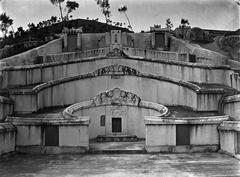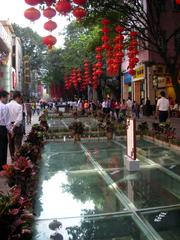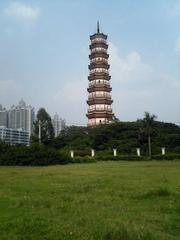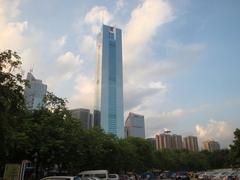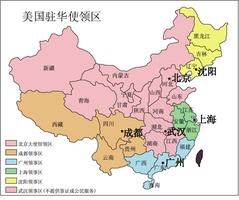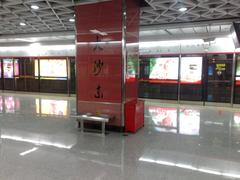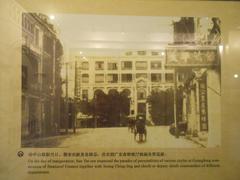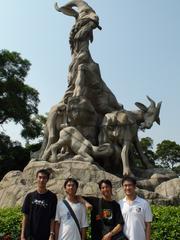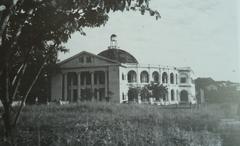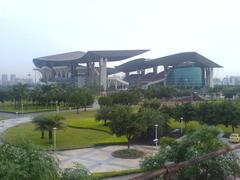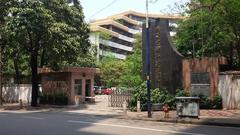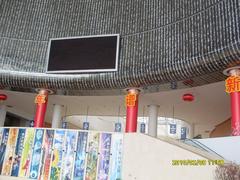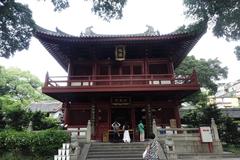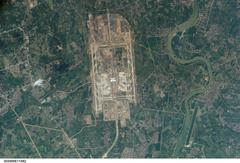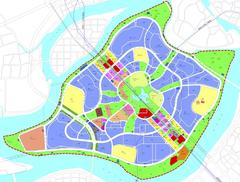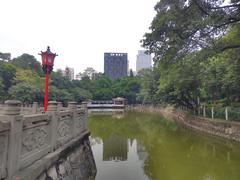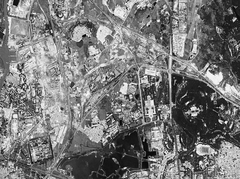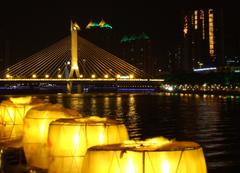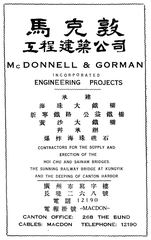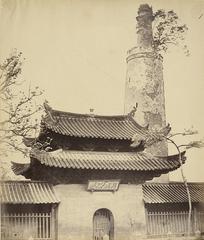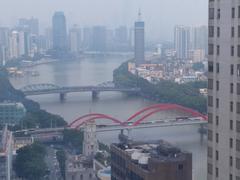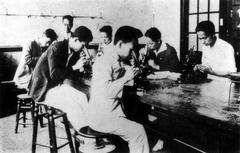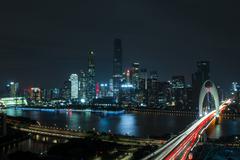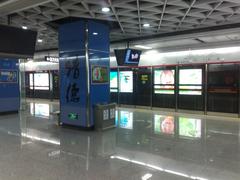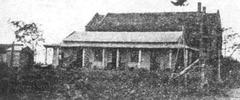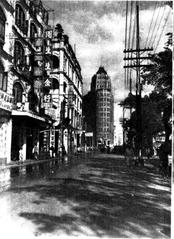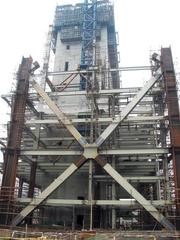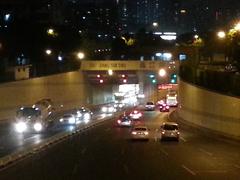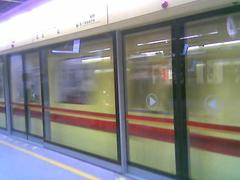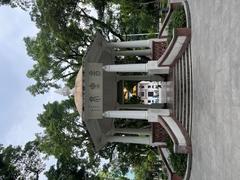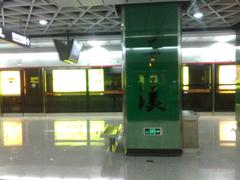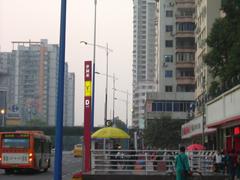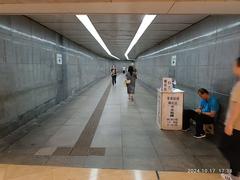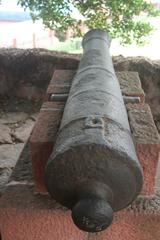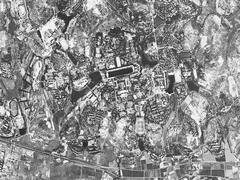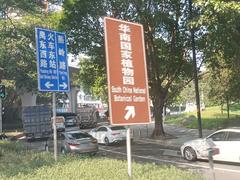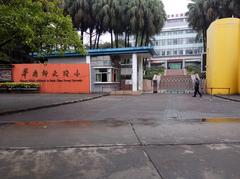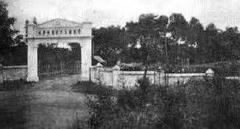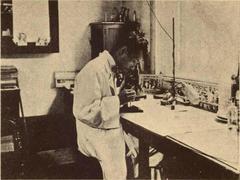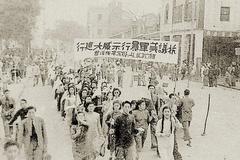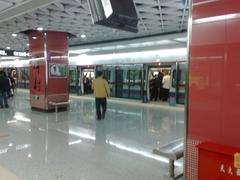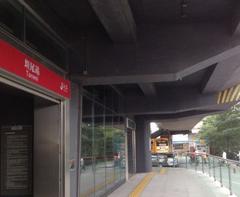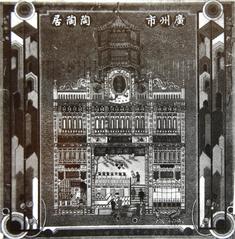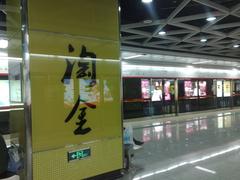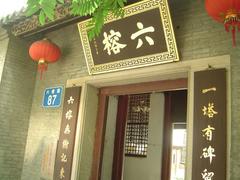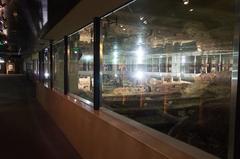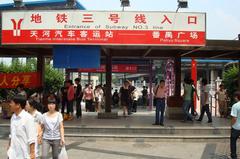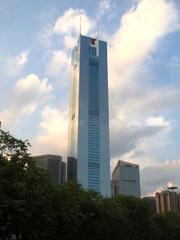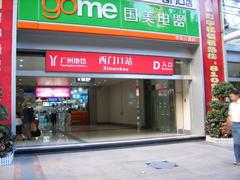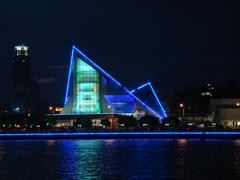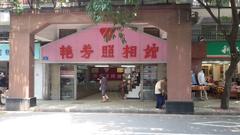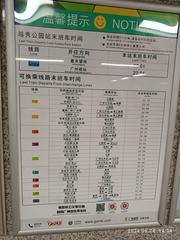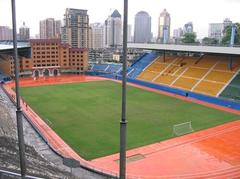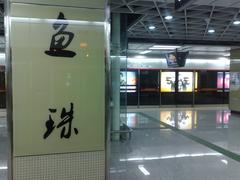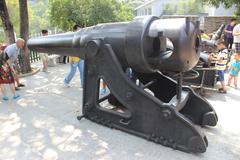Huanghuagang Station: Visiting Hours, Tickets, and Guangzhou Historical Sites Guide
Date: 15/06/2025
Introduction to Huanghuagang Station and Its Significance
Nestled in the heart of Guangzhou’s Yuexiu District, Huanghuagang Station is far more than a metro stop—it is the principal gateway to one of the city’s most revered sites: Huanghuagang Park and the Mausoleum of the 72 Martyrs. This memorial honors the valiant revolutionaries who gave their lives during the 1911 Guangzhou Uprising, a pivotal event that contributed to the fall of the Qing Dynasty and the birth of modern China. Here, history and urban life intertwine, offering visitors a unique portal into the revolutionary legacy of Guangzhou.
Since its opening in 2013 on Guangzhou Metro Line 6, Huanghuagang Station has been strategically placed not only to serve daily commuters but also to connect travelers with an array of historical and cultural landmarks, such as the Sun Yat-sen Memorial Hall and Yuexiu Park. This guide delivers essential information for visitors—covering visiting hours, ticketing, transport, accessibility, and key recommendations for exploring Guangzhou’s historical treasures.
Whether you are a history enthusiast retracing the steps of China’s revolutionaries or a traveler looking for cultural immersion, Huanghuagang Station stands as your starting point. With bilingual signage, modern amenities, and easy connectivity, it ensures a seamless and enriching journey through Guangzhou’s past and present. For further guidance, interactive tours and apps like Audiala offer enhanced experiences at historic sites (chinatravel.com, gz.gov.cn, metroeasy.com).
Table of Contents
- Early Historical Context of Huanghuagang
- The 1911 Guangzhou Uprising and the 72 Martyrs
- Huanghuagang’s Role in Guangzhou’s Revolutionary Heritage
- Urban Development and Modern Significance
- Huanghuagang Station: Gateway to History
- Visitor Information: Hours, Tickets, and Accessibility
- Cultural and Educational Importance
- Preservation and Commemoration
- Practical Visitor Tips
- Frequently Asked Questions (FAQ)
- Conclusion and Travel Resources
Early Historical Context of Huanghuagang
Huanghuagang (黄花岗), or “Yellow Flower Mound,” is steeped in the revolutionary and modern history of Guangzhou. The area gained national renown due to the 1911 Guangzhou Uprising, also called the Huanghuagang Uprising, a significant precursor to the Xinhai Revolution that toppled the Qing Dynasty and established the Republic of China (thenandnows.com). As part of Yuexiu District, Huanghuagang is situated in the ancient core of Guangzhou, a region marked by centuries of trade, cultural exchange, and political activism (chinatravel.com).
The 1911 Guangzhou Uprising and the 72 Martyrs
The defining chapter in Huanghuagang’s history is the Guangzhou Uprising of April 27, 1911. Led by Huang Xing and the Tongmenghui, an alliance established by Sun Yat-sen, the revolutionaries sought to overthrow the imperial Qing regime. Though the uprising failed militarily, it became a potent symbol of sacrifice, with 72 revolutionaries losing their lives. Their remains were enshrined at Huanghuagang, transforming the area into the “Tomb of the 72 Martyrs.” The mausoleum, statues, and memorials here have made this site a focal point for those seeking to understand the revolutionary roots of modern China (chinatravel.com, thenandnows.com).
Huanghuagang’s Role in Guangzhou’s Revolutionary Heritage
Huanghuagang is integrally connected to a network of Guangzhou’s revolutionary landmarks. In the late Qing and early Republic periods, Guangzhou was a nucleus of political activity. Sites such as the Sun Yat-sen Memorial Hall, the former Peasant Movement Training Institute, and the Whampoa Military Academy are all nearby, reinforcing the city’s stature as a cradle of modern Chinese nationalism (chinatravel.com). Annual ceremonies at Huanghuagang honor the martyrs, affirming the enduring legacy of their patriotism (thenandnows.com).
Urban Development and Modern Significance
The district surrounding Huanghuagang has seen significant transformation. The creation of the Huanghuagang Science Park underscores Guangzhou’s evolution into a hub of innovation and technology (govt.chinadaily.com.cn). Established as a high-tech zone, the park fosters IT, medical, and creative industries—demonstrating how Guangzhou honors its revolutionary past while embracing modern progress.
Huanghuagang Station: Gateway to History
Huanghuagang Station is strategically located for both commuters and tourists. It offers direct access to Huanghuagang Park and the Tomb of the 72 Martyrs, and its proximity to sites like the Guangzhou Zoological Garden and bustling neighborhoods such as Huale and Dengfeng positions it as an ideal base for exploring Guangzhou’s historical and contemporary attractions (mapcarta.com).
Image: Huanghuagang Tomb of the 72 Martyrs—A symbol of sacrifice in Guangzhou’s revolutionary history.
Visitor Information: Hours, Tickets, and Accessibility
- Huanghuagang Park & Mausoleum: Open daily, 6:00–21:00.
- Admission: Free for both the park and mausoleum; no ticket required.
- Guided Tours: Available through local agencies or on-site; often combined with broader historical tours.
- Accessibility: Wheelchair-friendly paved paths; some older areas may have steps. Public restrooms and seating are available.
- Transport: Served by Metro Line 6; city buses and taxis are easily accessible.
- Metro Station Hours: Huanghuagang Station operates 6:00–23:00; last trains depart at approximately 22:30 (metroeasy.com).
Cultural and Educational Importance
Huanghuagang is a cornerstone for educational tours and patriotic events. The site is featured in themed tours tracing Sun Yat-sen’s legacy, and is included in cultural routes like the “Retracing Sun Yat-sen Footprint” and “Huangpu History Tour,” drawing local and international visitors (gz.gov.cn).
Preservation and Commemoration
Guangzhou has invested in preserving Huanghuagang’s historical sites, maintaining the park and mausoleum as spaces for reflection and education. Regular commemorative ceremonies are held, especially around the Qingming Festival and other significant dates (chinatravel.com). The area exemplifies the city’s philosophy of integrating modern development with heritage protection (govt.chinadaily.com.cn).
Practical Visitor Tips
- Best Times to Visit: October–December and March–May offer comfortable weather. Weekdays and early mornings are less crowded.
- Food & Refreshments: Kiosks at park entrances, plus many Cantonese restaurants nearby.
- Language: Mandarin is official, Cantonese widely spoken; English is common in tourist areas.
- Payments: Mobile payment (Alipay, WeChat Pay) prevalent; cash recommended for small vendors.
- Safety: Guangzhou is generally safe; guard against petty theft in crowded areas.
- Family-Friendly: The park offers ample seating and is suitable for all ages.
- Contact: Emergency numbers—110 (police), 119 (fire), 120 (ambulance).
Frequently Asked Questions (FAQ)
Q: What are the visiting hours for Huanghuagang Park and Mausoleum?
A: Daily from 6:00 to 21:00.
Q: Is there an admission fee?
A: No, both are free to enter.
Q: How do I reach Huanghuagang Park by metro?
A: Take Metro Line 6 to Huanghuagang Station.
Q: Are guided tours available?
A: Yes, arrange via local agencies or hotel concierge.
Q: Is the site wheelchair accessible?
A: Main pathways are accessible, though some older sections may have steps.
Q: Are English signs available?
A: Yes, bilingual signage and announcements in the metro and at main sites.
Conclusion and Call to Action
Huanghuagang Station is not only a transit point but a bridge to Guangzhou’s storied revolutionary heritage and vibrant modern culture. Its integration with the city’s metro network and proximity to key landmarks make it an essential destination for anyone seeking insight into the events and spirit that shaped modern China.
For an enhanced experience, download the Audiala app for guided tours and real-time updates, and stay connected via official Guangzhou Metro and tourism platforms. Embark on your journey to Huanghuagang and discover the spirit of revolution and renewal that continues to inspire Guangzhou and China.
References and Further Reading
- Chinatravel.com - Huanghuagang, Guangzhou
- MetroEasy - Huanghuagang Station Guide
- Trip.com - Guangzhou Travel Guide
- East China Trip - Guangzhou Metro Map Guide
- China Daily - Huanghuagang Science Park
- Then and Nows - Guangzhou Then and Now
- Guangzhou Government - International Visitors Travel Tips
